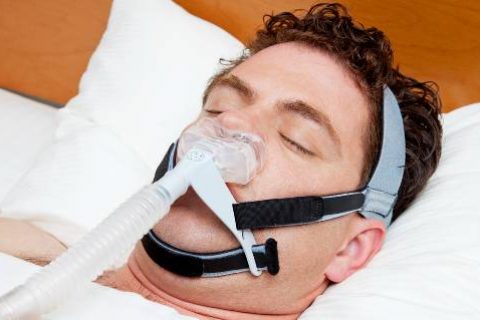31+ Key Sleep Apnea Statistics for 2023
While we might dismiss occasional comments from our significant others about our snoring, it could be a sign of a potentially serious medical condition called sleep apnea. Apnea, meaning “no breath,” is a temporary but repeated stopping and starting of breathing. It is associated with a range of health problems, including heart attacks and strokes. The following sleep apnea statistics will give you a better idea of how widespread and concerning the condition is and some ways you can treat it.

Sleep Apnea in the United States Statistics
Sleep apnea is one of the most common sleep disorders on the planet, with some researchers finding that as many as a billion people experience a form of it. While sleep apnea demographics include people of all ages, genders and races, there are some factors that increase your risk of developing it, including obesity.
- According to the American Medical Association, about 30 million Americans have sleep apnea. (American Medical Association)
- Approximately 30% of Americans experience some symptoms of sleep apnea. (American Sleep Apnea Association)
- Obstructive sleep apnea is the most common type, and researchers estimate 26% of Americans between the ages of 30 and 70 have it. (National Library of Medicine)
- At least 80% of people with the disorder haven’t been diagnosed. (American Medical Association)
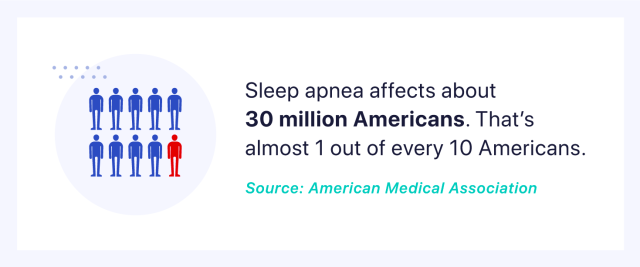
Gender
While sleep apnea can affect people of any gender, it is more common for men to be diagnosed with sleep apnea.
- Men under the age of 50 are two to three times more likely to develop the condition compared to women. (National Institutes of Health)
- After women turn 50, they are almost as likely as men to be diagnosed with sleep apnea. (National Institutes of Health)
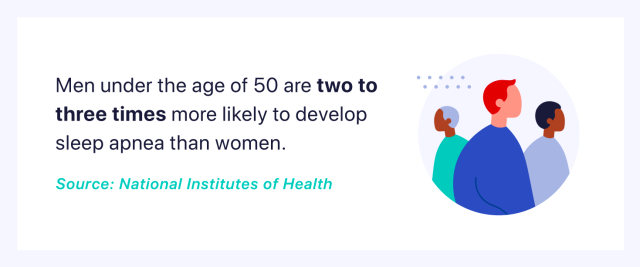
Age
People of almost any age can develop sleep apnea, but older adults are most at risk.
- The risk of developing sleep apnea increases as you age. (Sleep Foundation)
- As many as 32% of people over 65 have sleep apnea. (European Respiratory Society)
- Sleep apnea in children is fairly common and affects approximately 1% to 10% of children. (American Family Physician)
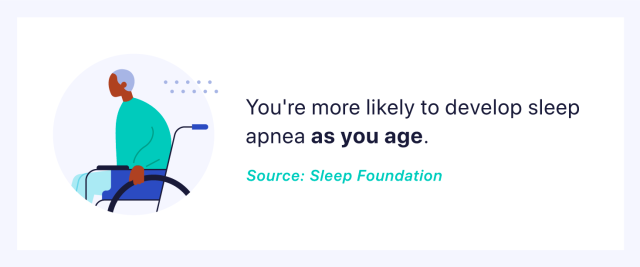
Sleep Apnea Causes and Risk Factors Statistics
Like most disorders, there isn’t a single cause of sleep apnea. Instead, it is usually a combination of factors that contribute to the disorder.
- Being overweight is one of the leading risk factors of sleep apnea. (American Heart Association)
- Smoking is a major risk factor for sleep apnea. If you’re a smoker, you’re 1.2 times more likely to have sleep apnea. (National Library of Medicine)
- If you drink heavily, you increase the risk of developing sleep apnea by 25%. (National Library of Medicine)
- A family history of sleep apnea could increase your risk. (National Heart, Lung, & Blood Institute)
Sleep Apnea Symptoms
Sleep apnea symptoms include more than just snoring, though snoring is an indicator of sleep apnea. Many signs of sleep apnea, such as depression and other mental health issues, could be attributed to other causes, which is why so many people aren’t appropriately diagnosed.
The American Sleep Apnea Association lists the following as symptoms.
Symptoms of Obstructive Sleep Apnea
- Snoring loudly at night with instances of choking or gasping for air.
- Feeling excessively sleepy during the day.
- Having headaches that last for several hours in the morning.
- Having a dry mouth after waking up.
- Restless sleep.
- Needing to get up to urinate in the night.
- Feeling irritable and frustrated.
- Having reduced focus.
Symptoms of Central Sleep Apnea
- Breathing problems while sleeping, including pauses in breathing and slow or sped-up breathing.
- Being excessively sleepy during the day.
- Waking up in the night.
- Experiencing chest pains or shortness of breath at night.
- Having a hard time focusing.
- Headaches in the morning.
If you or a loved one are dealing with a number of these symptoms, talk to your doctor about sleep apnea screening. They may ask you some questions from the Epworth Sleepiness Scale or prescribe a sleep study.
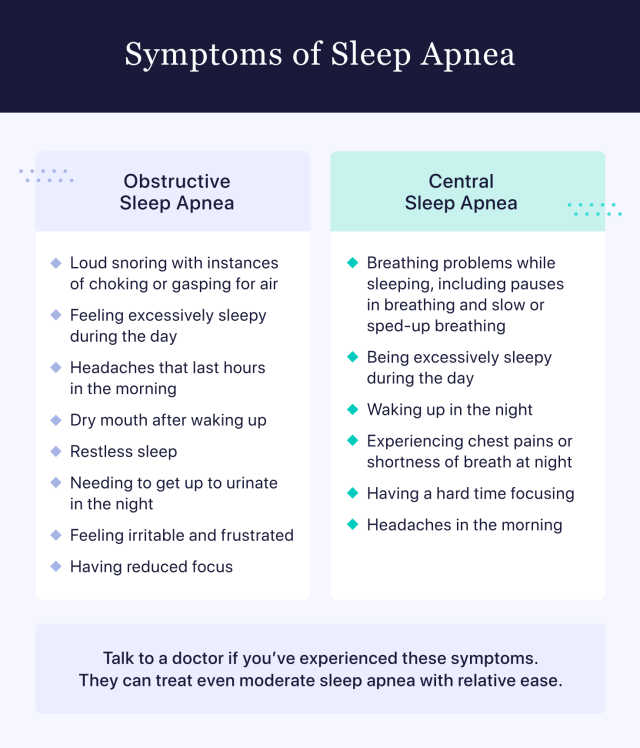
Sleep Apnea Side Effects
While a single night of poor sleep might leave you feeling tired and a little off, the side effects of untreated sleep apnea can be highly disruptive and dangerous.
- Those with sleep apnea are at a higher risk for hypertension. (National Library of Medicine)
- Heart failure, arrhythmias and sudden cardiac death are some of the most extreme side effects of sleep apnea. (National Library of Medicine)
- Other side effects of sleep apnea include fatigue, high blood pressure, heart problems (including heart attack and stroke), Type 2 diabetes, metabolic syndrome and liver problems. (American Heart Association)
- One study found that people with sleep apnea are 2.5 times more likely to be involved in car crashes. (American Academy of Sleep Medicine)
- Data shows that people with sleep apnea may experience physical and functional changes to their brain stems. (American Academy of Sleep Medicine)
Treatment for Sleep Apnea
If you think you may have sleep apnea, don’t worry. There are several treatment options available for mild, moderate and severe cases.
- Losing weight can help reduce the effects and severity of sleep apnea. (Sleep Foundation)
- A continuous positive airway pressure (CPAP) machine is one of the most common ways to treat apnea. It creates a steady stream of air at the right pressure level to help you breathe during sleep. (Sleep Foundation)
- CPAPs can help reduce the risk of heart failure in patients over 60 years of age. (Sleep Foundation)
- Automatic positive airway pressure (APAP) machines are similar to CPAPs, but instead of releasing a stream of air at the same pressure, these devices automatically adjust the amount of air pressure based on the person’s rate of breathing. (Sleep Foundation)
- BiPAP (Bilevel positive airway pressure) machines change the amount of pressure they deliver based on the user’s inhalations and exhalations. (Sleep Foundation)
- Mandibular advancement devices (MADs) are specially designed mouthpieces that position the jaw in a way that keeps the airway open. (National Library of Medicine)
- Surgical options are available, but they make up a very small percentage of sleep apnea treatments (approximately 0.2%). (National Library of Medicine)
- Treating sleep apnea can lower your blood pressure, even when you’re awake. (American Heart Association)
CPAP Statistics
A CPAP machine is one of the most common sleep apnea aids. The machine connects to a face mask via a hose that forces a constant stream of air into a sleeping person’s airways to prevent the airway from collapsing. There are a number of positive effects of this treatment. Many people sleep better, wake up feeling better and don’t feel as tired during the day.
- Almost 8 million people in the U.S. use a CPAP machine. (Forbes)
- A common reason people stop CPAP therapy is because of discomfort caused by the mask. (National Library of Medicine)
- There are several different kinds of masks that can make CPAP therapy more comfortable, including full-face masks, nasal masks that cover the nose and nasal pillow masks that only cover the nostrils. (Sleep Apnea.org)
- Evidence shows that long-term CPAP use can reduce mortality and the risk of developing heart disease and Type 2 diabetes. (National Library of Medicine)
- People report a 20% or higher improvement in quality of life after three months of CPAP therapy. (National Library of Medicine)
Some machines, including some CPAPS made by Philips, were recalled after injuring people. Talk to your doctor if your mask isn’t fitting correctly or if you aren’t comfortable using the machine. They can help you find ways to make the mask fit better so you can sleep better.
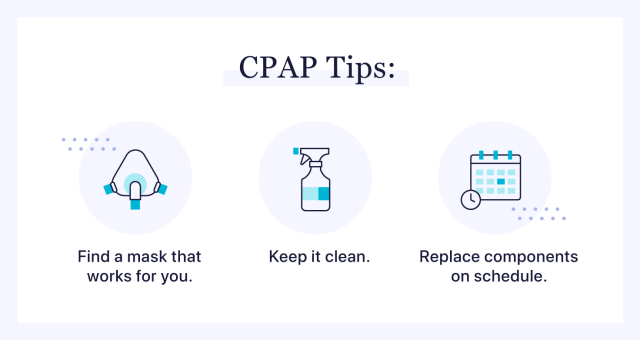
Sleep Apnea FAQs
How many people have sleep apnea?
Researchers estimate that 26% of people in the United States aged 30 to 70 years have sleep apnea.
How many sleep apnea deaths are there per year?
Almost 40,000 people with sleep apnea per year die from heart disease. The total number of people who die due to other sleep apnea-related conditions could be significantly higher.
How common is sleep apnea by age?
You’re more likely to develop sleep apnea as you age. Starting around age 30, your risk of developing sleep apnea increases until the age of 70.
How many people have untreated sleep apnea?
There’s no definitive answer, but researchers estimate that 80% of people with sleep apnea aren’t being treated for it.
Are there surgical options for treating sleep apnea?
There are a number of sleep apnea surgical options that work to correct underlying causes of sleep apnea, including:
- Jaw and Nasal Surgeries. There are several operations that can shift the orientation of the jaw or correct issues that prevent airflow through the nostrils.
- Somnoplasty. This surgery uses radiofrequency to reduce soft tissue in the area around the windpipe.
- Tonsillectomy/adenoidectomy. Removing the tonsils and adenoids can help make enough room for one to breathe more easily. This surgery is usually performed on children with obstructive sleep apnea.
Sleep Better and Improve Your Quality of Life: Tips for People With Sleep Apnea
Sleep apnea is treatable. Taking the time to talk to your doctor to get a diagnosis is the first step in the journey toward better sleep. In addition to what they suggest, there are other actions you can take to sleep better and improve the quality of your sleeping (and waking) life. Check out the infographic below for some ways to take charge of your sleep apnea.

Calling this number connects you with a Drugwatch.com representative. We will direct you to one of our trusted legal partners for a free case review.
Drugwatch.com's trusted legal partners support the organization's mission to keep people safe from dangerous drugs and medical devices. For more information, visit our partners page.


